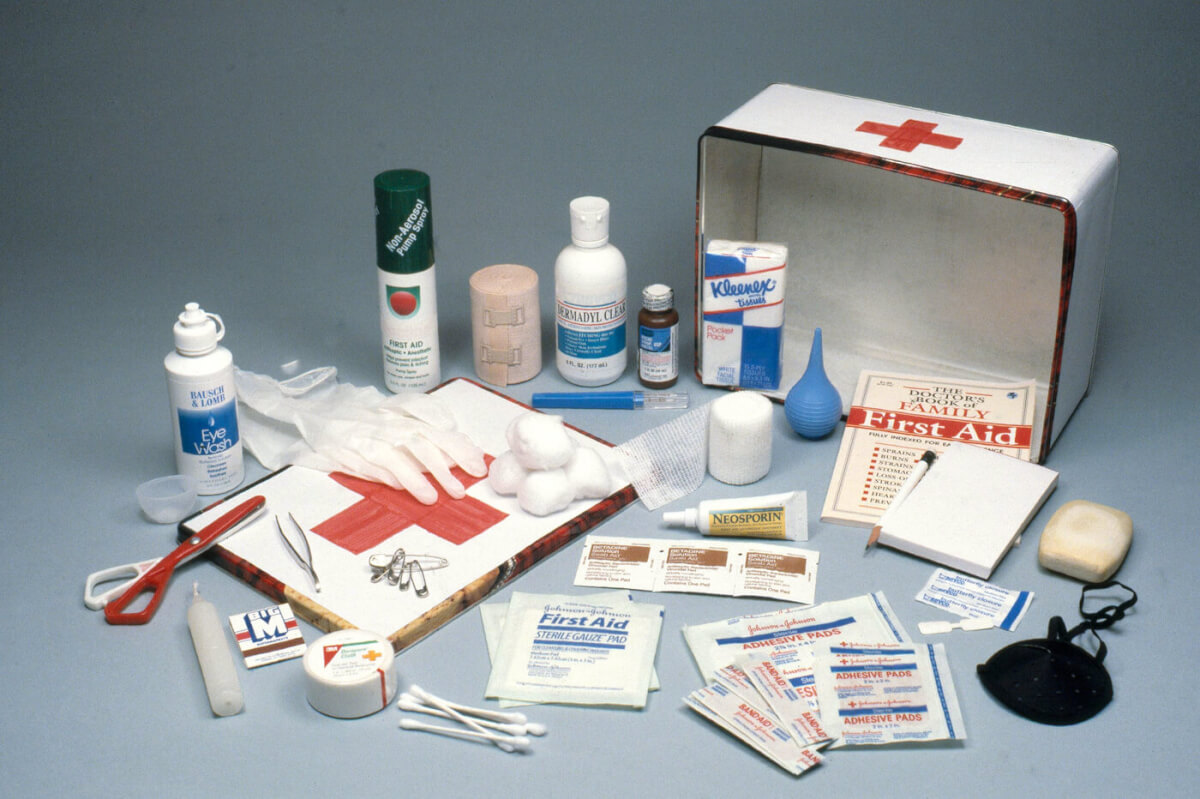Every home, auto and emergency pack should include basic first aid supplies.
In the event of a disaster, this is especially important as the ability to get medical attention from professionals might be days away. Rescue crews will be stretched thin and busy with other calls. Transportation routes might be blocked or under water. You might be trapped in wreckage or you might purposely be staying far from populations that are spreading disease.
Compounding this is the fact that when you are engaged in physical labor—removing debris, building temporary shelters, cutting firewood, procuring food—there’s a greater chance of injury.
Get ‘em Breathing
Everyone in your family should be trained in CPR. This is not a daunting task as the recommended procedures have been simplified in recent years. Learn what to do if a person’s airway is obstructed.
Stop The Bleeding
Applying pressure to a wound is one way to control bleeding. Though applying a tourniquet seems to be a given in every disaster movie, its use is limited and it should be used only as a last resort.
A clotting product is another option for controlling bleeding from severe wounds. Bloodstop IX is the latest such product, and it’s a good one. It’s made of water-soluble, oxidized, etherified, regenerated cellulose. No, I don’t know what that is either, but basically it is a woven matrix of fibers that contains natural plant components. It adheres to a wound and initiates blood coagulation to stop bleeding quickly. It transforms into a translucent gel that seals the wound while still allowing you to monitor it.
Unlike other products, because it’s water soluble, it is easily removed through rinsing without disrupting the clotted wound surface.

The Kit’s Contents
Aside from clotting pads, other items to consider for your first aid kit might include: acetaminophen, aspirin, alcohol, hydrogen peroxide, antibiotic ointment, antiseptic towelettes, adhesive bandages of various sizes, burn cream, butterfly closures, cold pack, cotton swabs, elastic bandages with clips, electrolyte tablets, exam gloves, finger splints, sterile gauze pads of various sizes, sterile trauma pad, moleskin, safety pins, sting relief ointment, waterproof tape, tweezers, scissors, razor blade and tourniquet.
Don’t forget a supply of prescription meds, inhalers, epinephrine and other items specific to your medical condition. In addition to the kit, you might want to be sure you have a supply of fresh water, clean towels and linens, soap and bleach.
Get The Training
Having a first aid kit won’t be of much use if you’re not familiar with basic first aid procedures. Everyone in your family or group needs this training. Youngsters used to get this training through their scouting programs, but fewer seemed to be involved these days.
Don’t confine your training to CPR. Learn to clean and apply a dressing to a wound, fashion a splint and put an arm in a sling. These skills should be developed with periodic hands-on practice. Learn what symptoms to watch for that might indicate shock, infection or hypothermia.
Just as important is to learn what procedures you should not attempt. For instance, it’s not recommended that you remove sharp objects that have penetrated a victim. Remember all of those movies where the cowboy pulls the arrow out of his chest or the cop pulls the jagged piece of metal wreckage from his partner’s leg after the big explosion? Don’t do that. You could make the bleeding worse and uncontrollable.
Keep a book on first aid with your kit so you don’t have to rely solely on your memory.

Calming Effect
There are benefits of administering first aid beyond just stopping the bleeding or preventing infection. Disasters are stressful situations and everyone needs to believe that you’re making positive gains toward making it out alive and well. A well-dressed laceration goes all long way in reassuring everyone in your group that things are going to be OK, and that you’re going to get through this together.
Editor’s Note: A version of this article first appeared in the Doomsday 2016 print issue of American Survival Guide Magazine.


